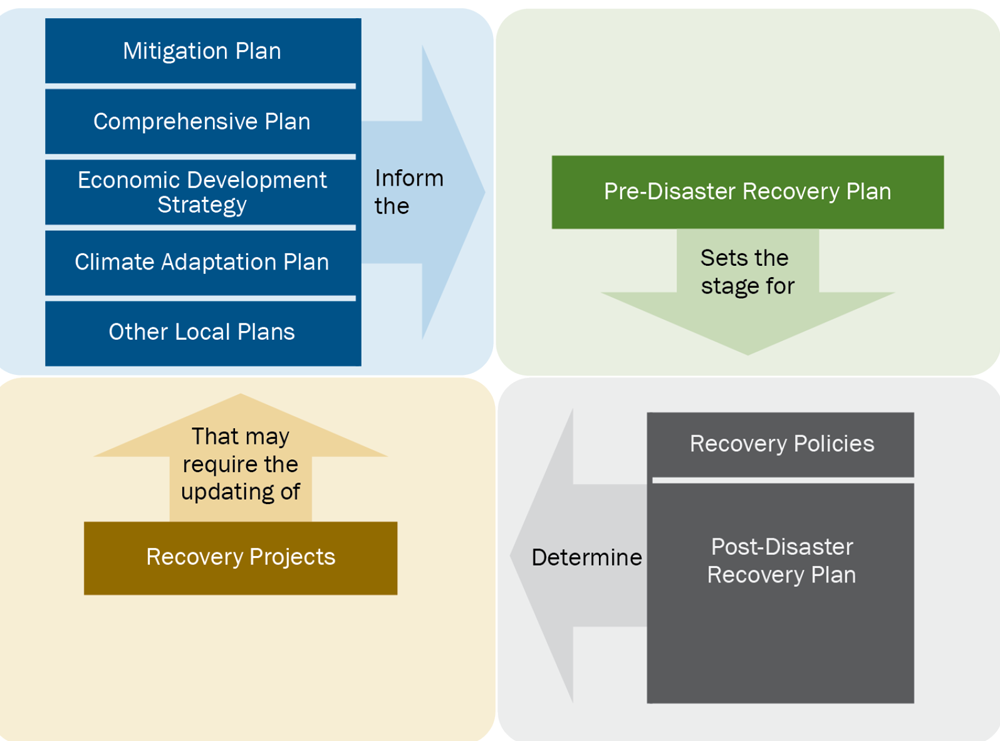Planning Ahead for Disaster Recovery

The Federal Emergency Management Agency (FEMA) has recently released the Pre-Disaster Recovery Planning Guide for Local Governments.
Local Recovery Planning Guide Aids Preparedness
This guide provides guidance and tools for local governments to pre-plan for recovery by developing recovery plans that follow a process to engage members of the whole community, develop recovery capabilities across governmental and non-governmental partners, and ultimately create an organizational framework for comprehensive local recovery efforts.
The guide also provides tools for identifying existing recovery resources, establishing recovery roles, creating partnerships, and building capabilities that could help local governments increase resilience.
The National Disaster Recovery Framework (NDRF), which is the national framework designed to support effective recovery in disaster-impacted communities, emphasizes principles of preparedness, planning, leadership, sustainability, resilience, and hazard mitigation as integral to successful recovery outcomes. The NDRF itself is a valuable resource for any entity participating in disaster recovery and serves as the basis for this new Guide.

This figure from the Pre-Disaster Recovery Planning Guide for Local Governments outlines the relationship between existing plans and the pre-disaster recovery plan. In addition, the figure explains how these existing plans and the pre-disaster recovery plan are used after a disaster to support the development of post-disaster recovery plans, policies, and projects.
Disaster Recovery Involves Broad, Multifaceted Efforts
Disaster recovery is much broader and more involved than simply rebuilding infrastructure, housing, and the physical environment. Effective recovery must also include the re-establishment of services, economy, and tax base; civic and social leadership engagement; increased resilience and reduced risk; and positioning the community to meet the needs of the future.
Preparation efforts, organized by the local government, are critical to ensuring that local leadership, government, and non-governmental organizations (NGOs) and, the wide array of whole community partners, are ready to act quickly to address the complexity of short-term and long-term recovery.
The American Planning Association has been a strong partner with FEMA in supporting communities before and after disasters, as well as, building capabilities for hazard mitigation and recovery planning both at the national and chapter level.
FEMA and APA have collaborated on key guidance, including Planning Advisory Service (PAS) reports Hazard Mitigation: Integrating Best Practices into Planning and Planning for Post-Disaster Recovery: Next Generation.
Key elements of the APA collaboration, including the PAS reports and the APA Model Recovery Ordinance, are emphasized in the FEMA Guide. FEMA and federal partners have worked with the APA Hazard Mitigation and Disaster Recovery Planning Division to support disaster-impacted communities.
Effective pre-disaster planning is an important process that allows a comprehensive and integrated understanding of community objectives applicable in the post-event period. Pre-disaster planning also connects community plans to guide post-disaster decisions and investments.
Top image: FEMA trailer construction. Photo courtesy FEMA.


